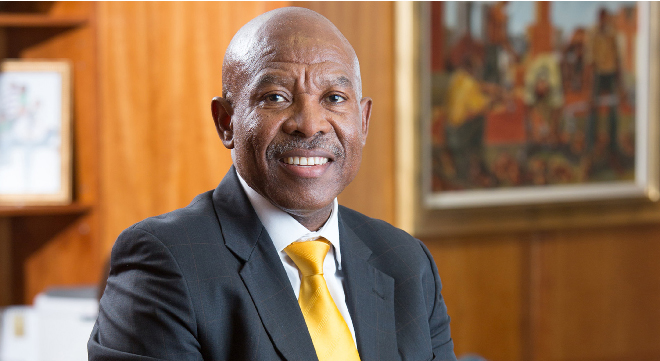The SA Reserve Bank should set an inflation target of 3% or 4%, and the failure to lower the target band to 2–4% – as intended – was “a major policy mistake”, says SARB governor Lesetja Kganyago.
Before he left office, then Finance Minister Tito Mboweni instructed National Treasury, as part of its broader review of the country’s macro-economic policy, to examine the bank’s inflation target. It is hoped that this research will be completed early next year.
In a virtual public lecture earlier this month, Kganyago said not moving the inflation target lower than 3–6% had entrenched higher inflation and higher inflation expectations. “The target range of 3–6% was eventually interpreted as a target point of 5.99%, resulting in nominal interest rates several percentage points higher than they might have been.”
He said the original target range was meant to shift down from 3–6% to 3–5% by 2004, and then down to 2–4%. “But then, after losing our nerve in 2001, when the rand depreciated during the Argentine crisis, the potentially inflationary consequences led us to put off moving lower than 3–6%. This was a major policy mistake…”
Kganyago said that if the inflation target had been reduced incrementally as planned, South Africa would have had lower inflation subsequently.
“Every other emerging market that started targeting inflation around the time that we did has revised its target lower at least once. This helps explain why we have remained a relatively high-inflation country. Looking at other middle-income countries with working monetary policies, their average inflation rate for the past five years has been just over 3%. Our average of 4.7% ranks us last in this group.”
He said that, as a result of the Covid-19 shock, the country has seen what it’s like to have inflation rates nearer 3% and, with that, low interest rates. The last time South Africa had rates this low for this long was in the 1960s, when the economy was booming, not in a crisis. “The low interest rates in the 1960s were possible because of low inflation. It follows that, if we want to keep interest rates low, the most important thing we can do is to lower the inflation target.”
Kganyago said he believed the inflation target should be 3% or 4% – in the same territory as the country’s peers. Given the uncertainties around inflation, the target would probably have to be plus or minus 1 percentage point. However, Kganyago said there should be a clear target, not a range, “to anchor expectations and to prevent any target drift in future, like the one we suffered when the 3–6% target range morphed into a 5.9% target. I take the view that 3% would be a good point target.”
He conceded that lowering the inflation target would “require some work” and would be “fundamentally easier and cheaper if we get buy-in from administered price-setters”.
Jeff Schultz, senior economist at BNP Paribas South Africa, comments on the proposed lower inflation target: “The Treasury is the government department that is formally responsible for setting the target range and framework. This means that it is ultimately a cabinet decision, where politics can play more of a role than is normally the case in SA’s highly independent monetary policy process. Given stark economic and socio-economic pressures in the system, the debate and research on any potential change to the range are likely to centre strongly around so-called ‘sacrifice ratios’: namely how much GDP growth it would cost to lower inflation further.”



